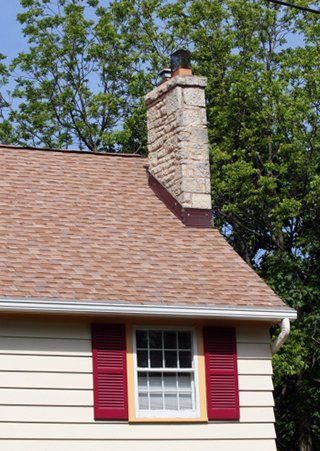Until recently, the scope of work performed in the inspection or evaluation of a fireplace, stove or other venting system was generally up to the discretion of the chimney service technician. Professional service technicians now have an industry standard that removes much of that “discretion.” The National Fire Protection Association (NFPA) has addressed the minimum chimney inspection standards in its latest publication (NFPA 211) concerning home heating appliances.

Level 1 Inspections
If your appliance or your venting system has not changed and you plan to use your system as you have in the past, then a Level 1 inspection is a minimum requirement. A Level 1 inspection is recommended for a chimney under continued service, under the same conditions, and with the continued use of the same appliance. In a Level 1 inspection, your chimney service technician should examine the readily accessible** portions of the chimney exterior, interior and accessible* portions of the appliance and the chimney connection. Your technician will be looking for the basic soundness of the chimney structure and flue as well as the basic appliance installation and connections. The technician will also verify the chimney is free of obstruction and combustible deposits.
Level 2 Inspections
A Level 2 inspection is required when any changes are made to the system. Changes can include a change in the fuel type, changes to the shape of, or material in, the flue (i.e. relining), or the replacement or addition of an appliance of a dissimilar type, input rating or efficiency. Additionally, a Level 2 inspection is required upon the sale or transfer of a property or after an operation malfunction or external event that is likely to have caused damage to the chimney. Building fires, chimney fires, seismic events as well as weather events are all indicators that this level of inspection is warranted. A Level 2 inspection is a more in-depth inspection than a Level 1 inspection.
Level 3 Inspections
When a Level 1 or Level 2 inspection suggests a hidden hazard and the evaluation cannot be performed without special tools to access concealed areas of the chimney or flue, a Level 3 inspection is recommended. A Level 3 inspection addresses the proper construction and the condition of concealed portions of the chimney structure and the flue. Removal or destruction, as necessary, of permanently attached portions of the chimney or building structure will be required for the completion of a Level 3 inspection.
About CSIA & CSIA Certified Chimney Sweeps
The Chimney Safety Institute of America (CSIA) is a non-profit educational institution that has established the only nationally recognized certification and accreditation program for chimney sweeps in the United States. The program was developed in keeping with CSIA’s commitment to the safety of chimney and venting systems and to the elimination of residential chimney fires, carbon monoxide intrusion and other chimney related safety hazards. CSIA devotes its resources to educating the public, chimney service professionals and other fire prevention specialists, and the insurance industry about the prevention and correction of chimney venting system hazards.
*Accessible: May require the use of commonly available tools to remove doors, panels or coverings, but will not damage the chimney or building structure or finish.
**Readily Accessible: Exposed, or capable of being exposed, for operation, inspection, maintenance or repair without the use of tools to open or remove doors, panels or coverings.
Please note that this material is copyright protected. Therefore, it is illegal to display or reproduce this information for any commercial purpose, including use as public relations literature.
Contact Us for Chimney Repair & Chimney Sweeping Near Bath, Hornell, Olean, NY & Bradford, Coudersport, PA
Hutch's Chimney & Stove Service, can help you make the most of your beautiful fireplace and keep it well-maintained. Whether you require chimney repair, chimney sweeping, or related services, our professionals can take care of it. We proudly serve those throughout Bath, Hornell, Olean, NY and Bradford, PA. We invite you to give us a call when you are ready to get your chimney repaired or swept.
Hutch's Chimney & Stove Service
Contact Us
We will get back to you as soon as possible
Please try again later
Follow Us
Carl J. Hutchison, Owner | Angelica, NY 14709
New York: 585-466-7962 | Pennsylvania: 814-274-8899
chutchison@stny.rr.com

